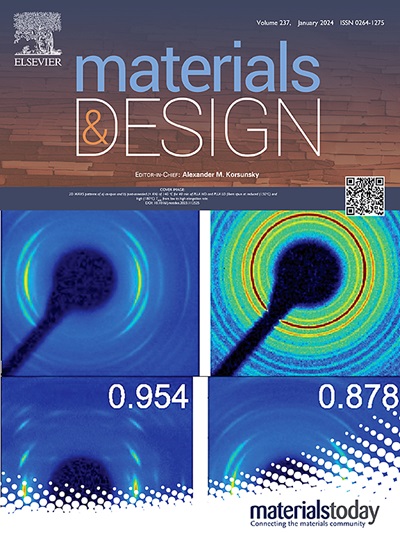Enhancing the surface strength of magnesium alloy AZ80 through cavitation peening
IF 7.9
2区 材料科学
Q1 MATERIALS SCIENCE, MULTIDISCIPLINARY
引用次数: 0
Abstract
In this study, the effects of cavitation peening on the surface properties of artificially aged Mg alloy AZ80 are investigated, focusing on surface roughness, microhardness, residual stresses and microstructure. The analysis by optical microscopy, scanning electron microscopy and backscattered electron diffraction shows that roughness, hardness and modified depth increase with increasing number of cavitation peening scans. The surface roughness (Ra) increased from 0.2 μm in the base material to 5.6 μm after cavitation peening of 20 scans (CP-20). The microhardness also increased from 80 HV0.05 to 112 HV0.05 at the same specimen. The compressive residual stresses improved from −10 MPa in the base material to −220 MPa after 5 scans (CP-5). With further increasing number of scans, residual stresses decreased to −20 MPa at 20 scans (CP-20). The microstructural analysis revealed that the increased occurrence of twins under the peened surface correlates with the decrease in compressive residual stresses. This indicates that excessive cavitation peening leads to twin formation and compressive stress loss. Therefore, limiting the number of scans is crucial for maintaining high compressive residual stresses level. At this point, the optimum number of cavitation peening scans for the material used has been suggested.

空穴强化提高AZ80镁合金的表面强度
研究了空化强化对人工时效镁合金AZ80表面性能的影响,重点研究了表面粗糙度、显微硬度、残余应力和显微组织。光学显微镜、扫描电镜和背散射电子衍射分析表明,随着空化强化次数的增加,表面粗糙度、硬度和修正深度均有所增加。经20次空化强化(CP-20)后,表面粗糙度(Ra)由基材的0.2 μm提高到5.6 μm。显微硬度由80 HV0.05提高到112 HV0.05。5次扫描后,残余压应力从基材的−10 MPa提高到−220 MPa (CP-5)。随着扫描次数的进一步增加,残余应力在20次扫描时降至-20 MPa (CP-20)。显微组织分析表明,喷丸表面下孪晶的增加与残余压应力的减小有关。这表明过度的空化强化会导致孪晶的形成和压应力损失。因此,限制扫描次数对于保持高压残余应力水平至关重要。在这一点上,对所用材料的最佳空化强化扫描次数提出了建议。
本文章由计算机程序翻译,如有差异,请以英文原文为准。
求助全文
约1分钟内获得全文
求助全文
来源期刊

Materials & Design
Engineering-Mechanical Engineering
CiteScore
14.30
自引率
7.10%
发文量
1028
审稿时长
85 days
期刊介绍:
Materials and Design is a multi-disciplinary journal that publishes original research reports, review articles, and express communications. The journal focuses on studying the structure and properties of inorganic and organic materials, advancements in synthesis, processing, characterization, and testing, the design of materials and engineering systems, and their applications in technology. It aims to bring together various aspects of materials science, engineering, physics, and chemistry.
The journal explores themes ranging from materials to design and aims to reveal the connections between natural and artificial materials, as well as experiment and modeling. Manuscripts submitted to Materials and Design should contain elements of discovery and surprise, as they often contribute new insights into the architecture and function of matter.
 求助内容:
求助内容: 应助结果提醒方式:
应助结果提醒方式:


